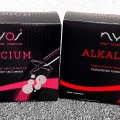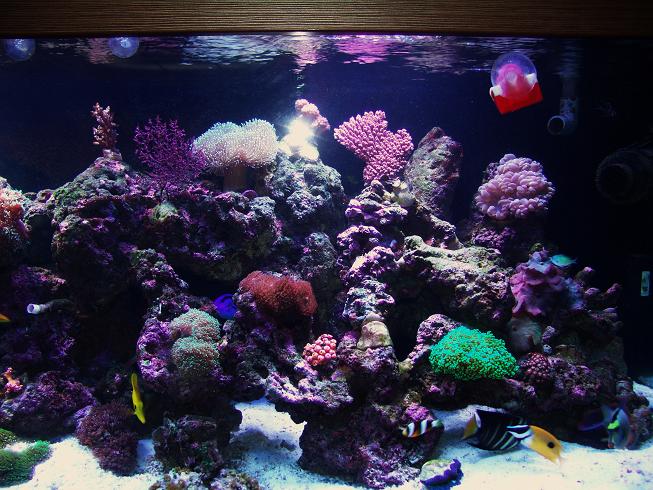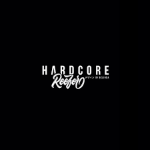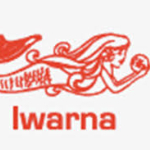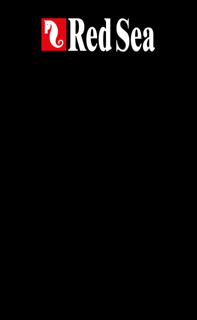Nutrients on the Reef (I)
Sooner or later, aquarists will encounter the topic of reef nutrient when keeping an aquarium. Many aquarists are often concerned about these questions:
- Is my nitrate and phosphate level ok?
- Should I feed my corals more?
- How do I reduce nitrate? or phosphate?
All these are fair questions.
However, if we approach reef nutrients just by looking at the nitrate and phosphate levels from test kits. We are like a blind man touching an elephant. For we only see a small part of a great picture.
For this article, N and P refers to inorganic salts containing nitrogen and phosphorus elements. We will discuss about how an aquarist can reduce nutrient level in a reef aquarium, just like how a driver steps on the brakes to slow down a car
Fixed vs. Free Nutrient

Let us consider a fully grown queen angelfish (H. Ciliaris). Show size queen angelfish is a foot long fish weighing almost a kilogram. For a fish of this size, it contains large amount of nitrogen and phosphorus in its body. However, when you add this beautiful fish into your aquarium, the nitrate and phosphate does not rocket through the roof. Why? It is because the nutrients are fixed in the tissue of the fish. Therefore these nutrients are not available for other organisms, such as bacteria and algae.

Let us look at pellets then. When we toss a handful of pellets in to the aquarium, does the nitrate and phosphate increases? Maybe. When the pellets is freshly added, the nitrogen and phosphorus are “locked” in the pellet ingredients. When a fish eats the pellet, it digest it, and some of the nutrients become part of the fish. These portion of pellets does not increase the free nutrient of the aquarium. The uneaten and indigestible part of the food, however, will breakdown thanks to the bacteria in the water. This will increase the free nutrient in the aquarium. Thus overfeeding (define as feeding more than fish can consume), and feeding low quality food (contain much ingredients, especially terrestrial origin, which can’t be digested by the fish) are the two main reasons of out-of-control nutrition levels.

Let us last consider algae. A bunch of hair algae contains fixed N and P in its cell. if these algae dies due to medication or water quality. These N and P will be released, and the free nutrients in the water increases. Without intervention, theses free nutrients will likely encourage the growth of some other forms of undesirable algae or bacteria.
Test kit and Expectations
High nutrient or low nutrient? We often take reference not from the nature, but from the test kit we use. Take for example, nitrate. natural reef water has a nitrate level around 0.25 ppm. Based on this standard, we may consider 1 ppm nitrate as high, while 0.05 ppm nitrate as low. However, reefers generally consider 1 ppm nitrate to be rather low. This is because many popular test kits, such the Salifert nitrate kit, has a lowest reading of 2 ppm in their normal test mode.
Things are not much better when it comes to phosphates. Most test kits are not able to measure the level in the natural reef. The worst challenge, however, is that hobby test kits only measures inorganic phosphates. While there are plenty of organic phosphates in the water. For an aquarium with 0 ppm phosphate from Hanna test, it may have significant organic phosphate in the water. These organic phosphates supplies nutrient to cyanobacteria and dinoflagellate alike.
When it comes to organic carbon, well, welcome to the jungle. There are few organic carbon test kits in the market. Not to mention the desired level of carbon is, for a lack of better word, undecided. We don’t care so much about organic carbons because we can’t test it. What if this is the key to reef nutrient management?
C-N-P and the Redfield Ratio
Redfield Ratio
It is only reasonable that aquarist talk about nitrates and phosphates when talking about nutrients in a reef aquarium. After all, the only accessible test kits for our hobby is nitrate and phosphate. The inconvenient truth is, if we cannot test certain things, doesn’t mean it’s not there, or it’s unimportant.
In 1934, oceanographer Alfred Redfield went around and sampled the marine phytoplankton and deeper ocean water. When he examined the chemical composition of these samples, he discovered something interesting. The ratio of C-N-P, as well as other elements, are more or less the same. On average, the ratio is 106:16:1 in terms of the number of atoms of C:N:P. Since then, Redfield ratio is one key idea for oceanography studies.
In Aquarium
Does Redfield ratio applies to our reef aquarium? Yes and no.
Unless you aquarium is a bowl of highly concentrated phytoplankton, or a void consist of deep seawater, the Redfield is not directly relevant for the water parameter. In fact, most of our reef aquarium supports far less phytoplankton than natural reef waters. Therefore, fixating on a magic ratio is generally counter-productive.
However, Redfield ratio gives us some hint about nutrients. The C:N:P ratio is a fixed value for a given organism. For example, Chaetomorpha has fixed C:N:P ratio. Nitrosomonas has a different fixed C:N:P ratio. Green Hair algae, cyanobacteria, diatoms… each of them has a fixed ratio of C:N:P.

Therefore, if your aquarium relies on these organisms for export, then we need to supplies them with a good balance of C:N:P. For instance, we harvest chaetomorpha to export nutrients. The carbon is supplied when the algae photosynthesizes. In order to grow, chaeto takes up N and P from the water, thus export thing them. If the concentration of N in water is not sufficient to support the growth, the chaeto will not be able to take up any P as well.
The lesson from Redfield ratio is simply: organisms exports nutrients in a fixed ratio. If one nutrient is insufficient, they can’t export other nutrients either.
Exporting by Biomass
Why do we need to care about the nutrient ratio for algae and bacteria? This is because most of the aquarium relies on exporting biomass for nutrient management.
Bio-fixation
A fish contains a lot of phosphate. However, adding a powder blue tang into an aquarium does not release these phosphates into the water. The phosphates are “fixed” within the fish. It’s not dissolved in the water. The algae cannot make use of these phosphates to grow. Basically, these phosphates does not contribute to the available nutrient in your reef tank.
If we can grow organisms which takes up nutrients in the water column; fix the nutrient in its cells. Then we remove some of these organism from the aquarium. Voilà, the nutrients are exported. The more these organism grows, the more nutrients they remove from the water. In practice, there are many different approaches to achieve this.
Bacteria and Skimming
Like it or not, bacteria is the most numerous organism in your reef tank. In the most ideal condition, bacteria undergo binary fission. During the process, one bacterium becomes two, two become four. Before you know it, the amount of bacteria can reach unreal proportions. For instance, nitrosomonas, one of the common nitrifying bacteria, has a growth rate of 3.0/day. If your aquarium starts with a single bacteria, theoretically, there will be 205,891,132,094,649 bacteria one month later. This amount of bacteria would weight more than 200 kg. Fortunately for us, such situation is next to impossible in our reef aquarium. There is limited space and nutrient to support exponential growth. In addition, some bacteria dies off, or become prey to other organisms. Nevertheless, this growth of bacteria can significantly deplete the nutrient in the reef, and cause cloudiness at the same time.
Since the reef aquarium can only support a limited population of bacteria, nutrient export is inefficient unless the bacteria is constantly removed from the aquarium. Lucky for us, bacteria tends to flock together. This bacteria flocks are easily removed with protein skimming.
Algae as a form of nutrient reduction
Growing algae outside the display tank is a natural and effective way for nutrient reduction. Aquarists can grow turf algae within an algae scrubber. Alternatively, they can grow macroalgae in a refugium, or more recently, a reactor. Algae, being slightly more complex than bacteria, grows and propagates much slower. Therefore it takes longer for an algae based export to be up and running at full capacity.
Algae make the required organic carbon mainly from photosynthesis. However, different algae contains different proportions of N and P; and these inorganic nutrients must be take up from the free nutrients in the water column. This tiny detail is significant, because it affects the efficiency of an algae scrubber or macroalgae refugium.

(image from carousell)
In an algae scrubber, the aquarist does not purposefully keep a (few) species of algae. Many different algae species compete with each other based on available nutrients and space. When the phosphate is higher, for example, more brown algae will grow. In a way, an algae scrubber is effective across a wide range of water parameters, and it is self-tuning to a certain extend.
In a macroalgae refugium, the aquarist has to provide proper nutrients for the chosen species of algae. If a species of algae use up most nitrate in the water, but leave behind a lot of phosphates, then the aquarist needs to intervene to maintain the balance.
If an aquarist pulls some algae from refugium, and feed them to the fishes, are they exporting nutrients? Please let me know your thoughts in the comment below.
Corals
Corals, as well as photosynthetic invertebrate such as tridacna clams, requires N and P to grow. Therefore by growing these desirable organisms, aquarists unknowing remove some of the nutrients from the water column as well.
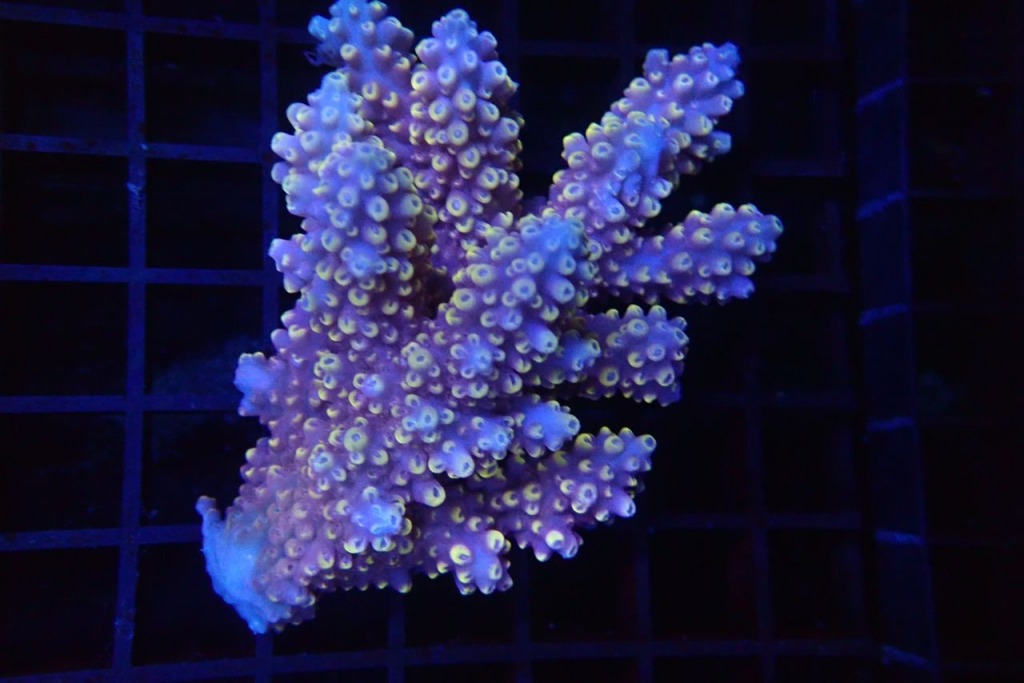
Since growing corals and invertebrates is the main goal of a reefer, this export technique is almost perfect. The problem however, is that the corals and inverts are more advanced than algae and bacteria. Therefore they grow slower, and also demand a more exacting water quality.
Managing Nutrient Imbalances
The methods listed above exports C-N-P at the same time. What can we do when the nutrients become out of balance? There are two tools in our arsenal: we can add in the limiting nutrients, or we can export the excess.
When it comes to addition, carbon dosing is extremely effective to provide the limiting nutrient for these bacteria: organic carbons. Addition of organic carbons directly into reef waters allows faster growth of bacteria, This, coupled with an efficient skimmer, can be very effective to export large amount of N and P. In some aquaria, when N and P becomes imbalanced, the aquarist can dose nitrate or phosphate to make up the difference, and eventually achieving a lower level for both N and P.
Selective export method; for N and P gives aquarist fine tuning ability to adjust the level of specific nutrients. Sulfur denitrator removes nitrate from the aquarium without affecting the phosphate level. On the other hand, phosphate media such as GFO and aluminum oxide takes care of phosphates without changing the nitrate level.
Conclusion and More
I start discussion from the perspective of nutrient removal, because achieving low nutrient level is the goal of many reefer. However, just like you need both accelerator and brake to drive a car, reefers need to know how to increase the nutrition in the water. Remember, the goal of reefing is not to get nutrients as low as possible, but to provide correct and stable level of nutrient based on how your aquarium is run.
In part II of this article, I would discuss the flip side of the coin. we will look at how we can increase nutrients in the reef in a controlled way. Meanwhile, keep the nutrients low where you want them, and carry on reefing.





